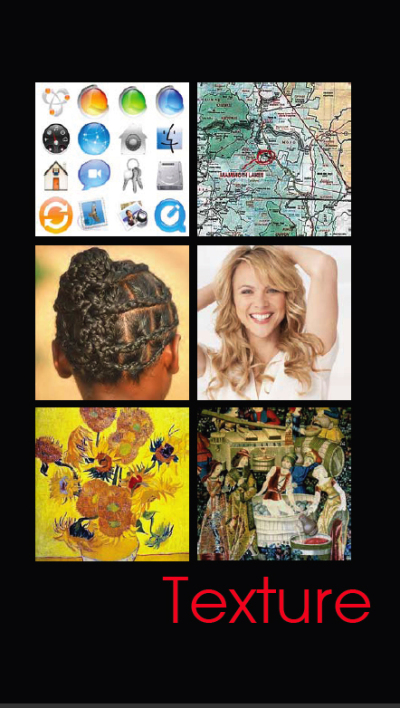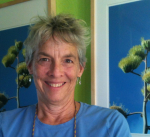Finding Your Voice, Your Path
 Tuesday, January 20, 2009 at 09:30AM
Tuesday, January 20, 2009 at 09:30AM
We all want our work to be distintive and unique. Really, don't we? No matter how much we admire the work we see of other artists, when we embark on the journey of living the artist's life, we want our work to sing with our own voice. I think there are several parts to finding that voice, that path (if voice in a visual sense seems too mixed a metaphor). I also think the process is similar no matter your medium and whatever the field you pursue, be it art, quiltmaking, physics or cookery. As I've been teaching this past week, and heading into two more workshops this week -- one in Austin for the Austin Fiber Artists and my own recurring Artist Journal/Artist Journey retreat this weekend -- this piece I wrote a couple of years ago -- and revised for the upcoming events -- bears repeating. Today, Part One:
Think about "Pure Form:"
I believe – and my belief is supported by more than 30 years of work with children in creative learning environments – that each of us is born with an innate preference/leaning toward a particular way of perceiving and giving form that is directly connected to what I (and my colleagues in this work) call the Sensory Alphabet. This vocabulary of non-verbal qualities – line, color, shape, space, light, texture, movement, sound and rhythm -- is a way of thinking about and organizing one’s individual strengths of perception and invention. Looking at one’s preferences and natural tendencies through this lens serves as both a way to self discovery and as a bridge to understand other creative work. This vocabulary is not just an artistic one – it can hold as true to creative work in business as in design, in science as in art.
If you think about letters of the alphabet as being the building blocks of literacy (both spoken and read and write) and numbers as the building blocks of mathmatics and physics, then the Sensory Alphabet is what can be a symbol system for everything else (and even math and words, sinces it's more primal, more connected to our bodies and minds in a very basic way.)
Think about which of these constructs is easiest for you to notice, to manipulate, to play with –is it pattern (rhythm) or texture or color? What did you love as a young child? Which of these elements are most important to you in your home, your environment? What artists do you resonate to? Design exercises and experiences for yourself that feed your mind’s natural interests, or find teachers that share your sensibilities (look at their work and see what they say about it) who can provide classes that feed your perceptual strengths.
An understanding of your own creative style in terms of this vocabulary can be the starting place for finding your voice – and even help you find the best and strongest medium for work. For example, if color is my strong suite, I might take time to do dye and discharge samples, study Albers and other colorist’s work, take photos exploring color themes, investigate watercolor and glazing, look at color as understood by chemists and physicists, etc. If movement is a strong suite, I might see how to incorporate moving elements in my textile work, take up techniques that use my body in strenuous and challenging fashion, look at how movement blurs an image and how to capture that sense with dyeing or printing, I might even want to dye fabrics and construct garments for dance performances or architectural installations with moving components.
Most of us have three or four of these strong suites that interact in interesting ways and can pose intriguing puzzles for our work. Tracking down your strongest perceptual elements is usually just a matter of paying attention to preference, to what you notice in a space, to the materials that call your name. Journaling about childhood preferences and doing detective work in your closet, your home, your memory bank can help you name your sensory strengths.
Our book, New World Kids, The Parent's Guide to Creative Thinking includes investigations and invention activities for adults as well as for adults and children, despite the title. We think parents need to nurture their own experience with this alphabet in order to recognize their children's strengths and learning styles. Here's an example for TEXTURE -- since most of us who end up in the fiber arts are almost certainly drawing on some interest and facility for texture, I figure it might spur you own with some Sensory Alphabet play!
From NEW WORLD KIDS, all rights reserved.

TEXTURE investigations to do on your own:
1. Examine your wardrobe and make a texture inventory.
What textures really suit you? What feels good against your
skin? Make a point to buy something with a pleasing texture
the next time you shop.
2. Cook a meal with a conscious plan to include contrasting
textures, as the Japanese do. Do certain kinds of tastes correspond
to certain kinds of textures? Think temperature as well
as crisp, creamy, grainy, smooth.
3. Where can you experience coarse, slimy, mushy, matted,
abrasive, elastic, sleazy, itchy, silky, downy, frothy, fuzzy?
Consciously create one new tactile experience each day for a
week.
4. Listen to different music with an ear toward texture: contemporary
jazz, baroque, chant and heavy metal are a few contrasting
genres to try.
5. Visit a museum’s textile or fiber arts exhibitions or explore
some online exhibitions or galleries. Try one or more
of these key words for a search: fashion, art quilts, traditional
quilts, art cloth, knitting, weaving, wearable art, basketry, fiber
arts, shibori, batik.
6. Study and write a poem about the textures of your body,
inside and out.






